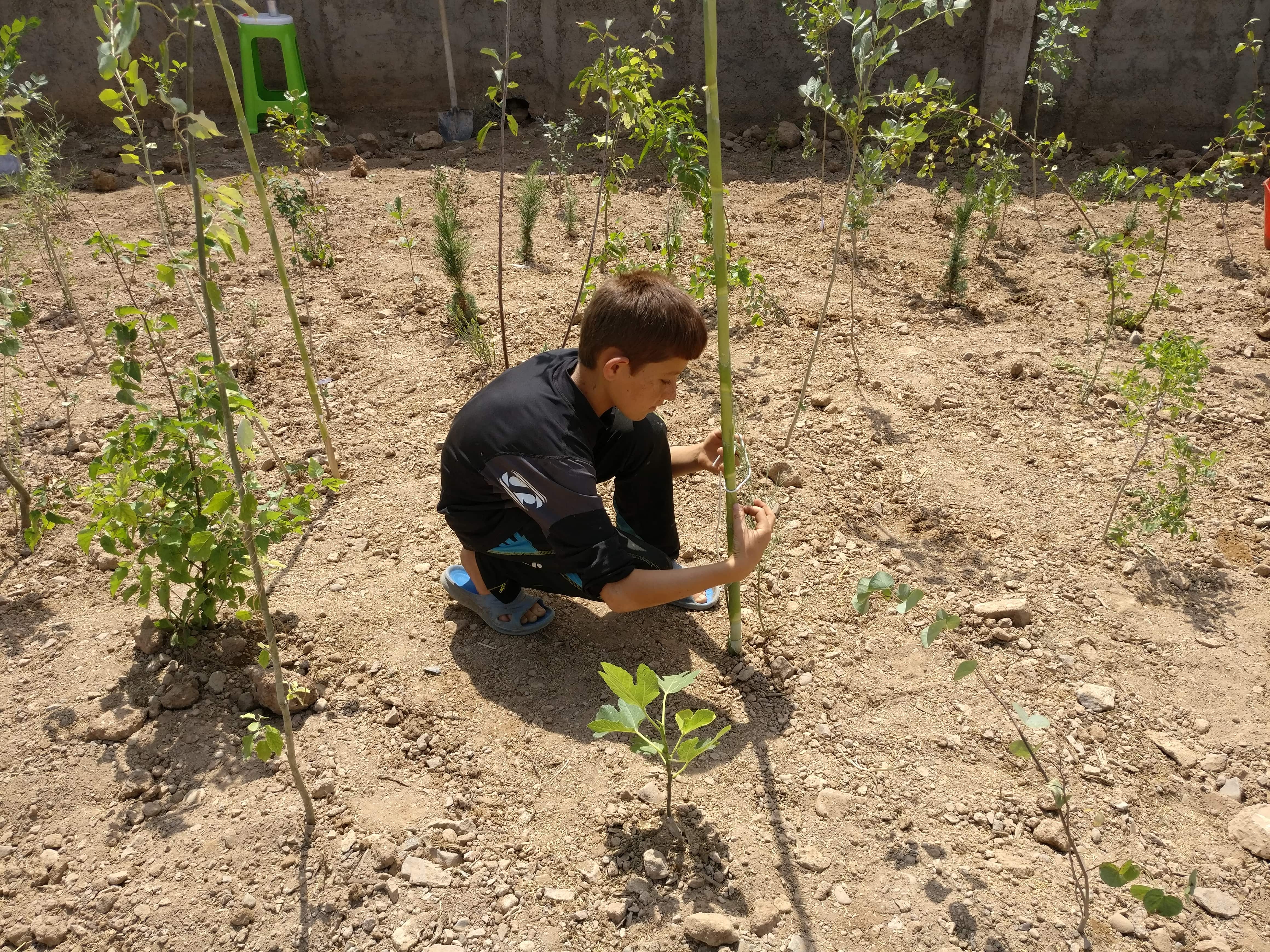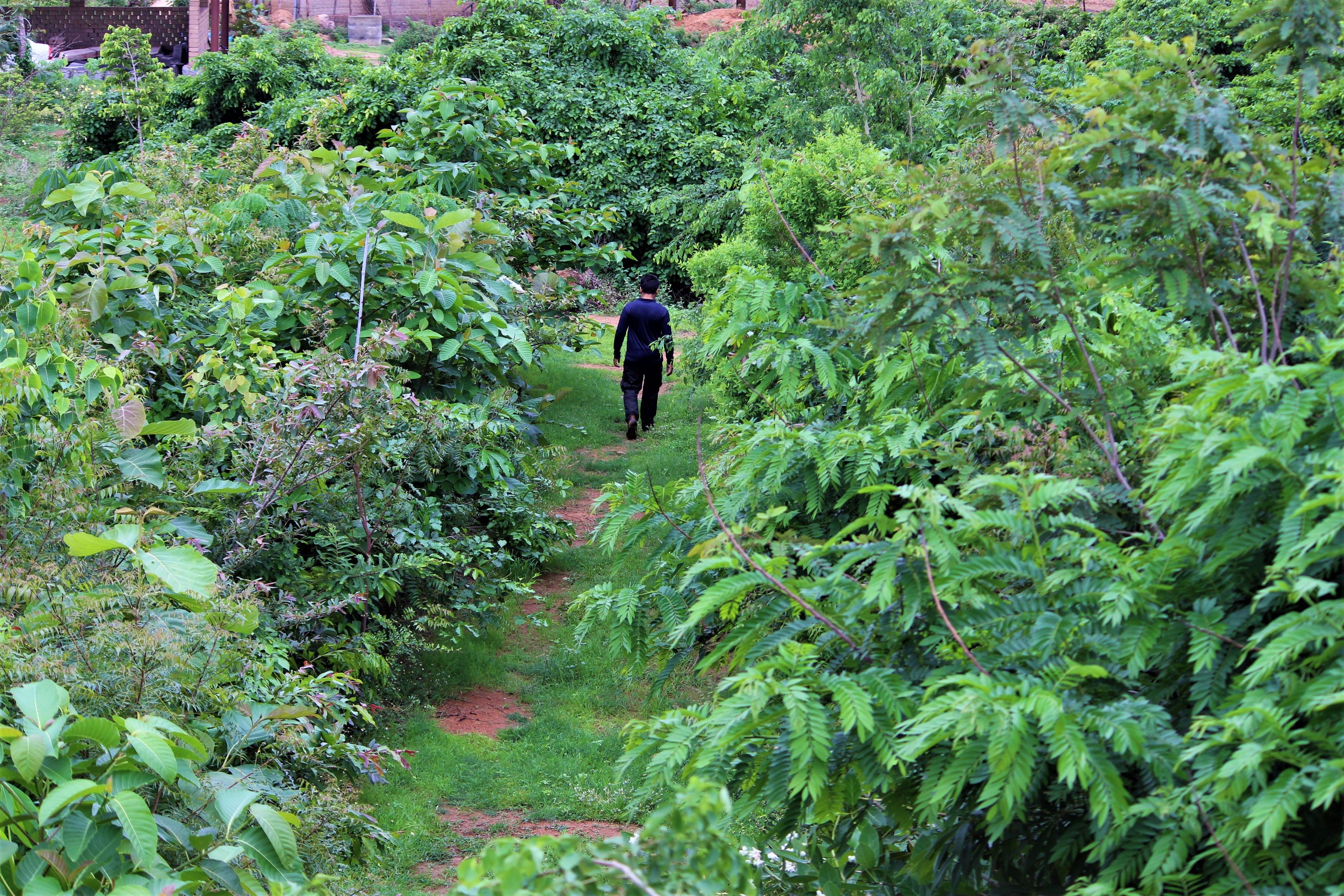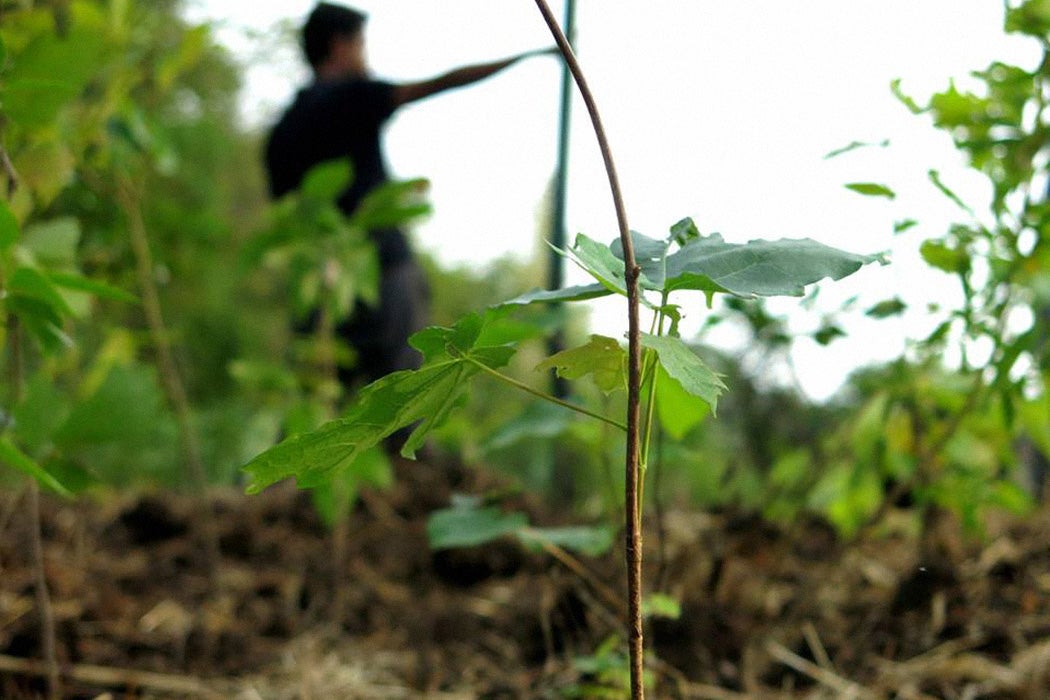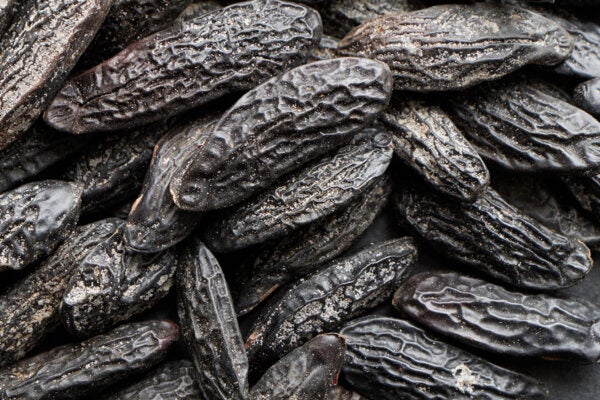In 2010, Shubhendu Sharma cleared the grass from the 75-square-meter backyard of his family home in the city of Kashipur, in India’s Himalayan Uttarakhand state. Into the intensely compacted soil he planted 224 saplings of some 19 species of shrubs and trees— timber, and guava and mulberry among other fruit trees. Then he weeded and watered and monitored. He watched as the young, frail plants leafed and flowered, quickly growing tall and thick, as a dozen species of birds moved in to the newly lush habitat, as a thermometer registered coolness beneath the trees—a difference of some 5 degrees Celsius from the surrounding air—even in June’s blistering heat. And August’s Monsoon rains, which once puddled on the surface of the yard, absorbed into the dirt “like a sponge,” says Sharma. In a year, his backyard had become a self-sustaining mini forest.
Planting it was an odd pursuit, given that Sharma had never been particularly interested or drawn to studies or work involving flora. He made his living as an industrial engineer, a career he had dreamed of, in fact, since his boyhood. But in 2009, while working on assembly line and dispatch systems at a Toyota plant in Karnataka, Sharma was captivated by a presentation given by Akira Miyawaki. The Blue Planet Award-winning botanist from Japan is celebrated for his very particular approach to afforestation—a soil-, air-, water-, and climate-remediating process by which trees are planted where no trees existed before. He’d come to apply his method to a tract of land around the factory where Sharma worked.
Weekly Newsletter
Sharma volunteered to help place over 32,000 native trees and plants like neem, mango, and teak into the otherwise industrial landscape. And from that day on, his fate was sealed. In 2011, after proving that Miyawaki’s method could work for his own experimental backyard forest, he quit his job at Toyota and opened a forest-production company named Afforestt, which practices what Miyawaki preaches: the introduction to a depleted landscape of “potential natural vegetation,” which is what would naturally occur in that particular place without human intervention.
Since then, Afforestt has planted over 450,000 trees in 144 tiny, fast-growing forests in 50 cities around the world, helping improve global ecosystems functionality one miniscule but power-packed patch at a time.
Afforestation Basics
It’s no secret that Earth is rapidly losing its forests. Just between 1990 and 2015 the world lost 129 million hectares of them, which equals “two Texases,” as the Washington Post put it. Deforestation is responsible for an estimated 5 billion tons, or 17 percent, of annual global carbon emissions, not to mention soil erosion and biodiversity loss.
In contrast, growing forests has numerous benefits. Forests remove vast amounts of carbon from the air and store it in leaves, branches, trunks, roots, and dirt. Tropical forests alone store one quarter of a trillion tons of carbon, according to the World Wildlife Fund for Nature. Older trees store more carbon, while younger trees remove, or sequester, more of it. Forests cool the air and generate oxygen, plus they clean our waters and regulate precipitation and wind. They also house 80 percent of our terrestrial biodiversity, reduce soil erosion, halt desertification, and lessen the impacts of floods. Newly planted forests improve land degraded by mining, growing crops, and over-grazing livestock. Planting forests can also help reduce fertilizer runoff into rivers that causes algae blooms and create wildlife corridors between one isolated verdant bit and another. That’s why afforestation is critical to the continuation of life on our planet, which is rapidly heating while losing its ecological biodiversity.
Recognizing the essentialness of forests, the International Union for Conservation of Nature (IUCN) and the German government issued the Bonn Challenge just as Sharma was getting Afforestt up and running. This initiative piggybacked onto earlier efforts from various international players to commit countries to saving and creating forests; the goal of the Bonn Challenge now is to restore 350 million hectares of degraded land by 2030 by planting millions of trees.
Historically, however, afforestation was largely seen as a means to generate income from timber and other products. So afforestation projects often favored plantations of single species, like Monterey pine or Sitka spruce or oil palms. Many of the Bonn Challenge projects follow the same monoculture approach, which has its pros and cons.
Monoculture forests have carbon benefits—204 million acres worth of new plantations could sequester 18.1 gigatons of carbon dioxide by 2050. But Project Drawdown points out that “they are often created with purely economic motives and little regard for the long-term well-being of the land, environment, or surrounding communities.” It also calls them “ecological deserts,” as a stand of only pines, for example, does little to promote the multi-species plant and animal diversity found in a natural forest system. Monocultures of trees can also cause harm. In 2008, Karachi stuck into the ground 2.2 million non-native Conocarpus trees, a species notorious for contributing to droughts in water-scarce places, which left experts worrying about the potential adverse effects.
Enter the Miyawaki Method.
The Miyawaki Method
As a young graduate student in the late 1950s, Akira Miyawaki learned about the emergent concept of potential natural vegetation (PNV). This, along with his studies in phytosociology—the way plant species interact with each other—guided his explorations of the vegetation growing throughout his native Japan. Eventually, he began visiting Shinto sites and observing their chinju no mori, or “sacred shrine forests.” Miyawaki determined that these were time capsules, showing how indigenous forest was layered together from four categories of native plantings: main tree species, sub-species, shrubs, and ground-covering herbs.
Using this four-category system, along with his surveys of these sites and his knowledge of PNV and phytosociology, Miyawaki designed his own system for planting forests.
It works like this: the soil of a future forest site is analyzed and then improved, using locally available sustainable amendments—for example, rice husks from a nearby mill. About 50 to 100 local plant species from the above four categories are selected and planted in clumps as seedlings in a mix like you would find growing naturally in the wild. The seedlings are planted very densely—30,000 to 50,000 per hectares as opposed to 1,000 per hectare in commercial forestry. For a period of two to three years, the site is monitored, watered, and weeded, to give the nascent forest every chance to establish itself.

During this early period, the plantings compete with each other for space and access to light and water—a battle that encourages much faster growth. In conventional afforestation techniques, five to ten centimeters of growth per year is considered the norm, depending on the species. In the Miyawaki method, trees grow about 10 times faster. Once stabilized, the forest is left to flourish, forevermore, on its own without further interference.
Miyawaki has planted over 40 million trees in this way, in 15 countries, including, especially, his own. Critics have accused him of shilling for corporations like Toyota, which have contributed to deforestation in places such as India, and of creating monotonous-looking forests that are expensive to boot. But at the age of 91 he continues to plant trees —90 million of them are slated to be put in along Japan’s coast as a buffer against future catastrophic tsunami damage. And disciples like Shubhendu Sharma have emerged to pick up where he will eventually leave off.
The Sharma Algorithm
An engineer with a native zeal for quantifying systems, Sharma turned Miyawaki’s method into a set of assembly line instructions. Using an algorithm similar to Toyota’s assembly line that produces several different types of cars, each with its own requirements, he derived his own formula to make a multi-layered forest with plantings that also have different time, space, and other needs. Although his company offers consultation, training, and the actual building of forests, anyone can email Afforestt and receive access to Sharma’s graphs and instructions for planting a forest, start to finish. “Dr. Miyawaki invented this process, and whatever I understood of the methodology I wrote it as a standard operating procedure, so it could be replicated,” says Sharma.
From that manual, a would-be forester learns so much, including how to determine soil type using the “ribbon test;” how to collaborate with a local nursery to find truly native species; how to prepare the planting site; and how to arrange saplings, three to four per square meter, into a grid. (When planting his backyard forest, Sharma accidentally introduced two non-native species—neither he nor his source knew any better at the time—so he includes detailed instructions to help others avoid this mistake.) Now that Sharma has computerized the process, he’s back-working it to turn it into an analog, paper-based system that those without computer access can use.

A high level of diversity is paramount on Sharma’s list of essential goals. In projects Afforestt has undertaken in India, his company so far managed to use about 336 types of native trees out of 2800 that are known to have existed in the country. And the company has started its own nursery in Rajasthan to begin to add more species to their plantings.
Sharma is adamant that the impact of even very small forests on local communities is significant enough to matter. Research from Wageningen University in the Netherlands, which found increased fungi, bacteria, pollinators, and amphibians on two tiny planted forest sites in urban Zaanstad that were based on Sharma’s model, lends some scientific credence to this claim.
Perhaps more importantly, Sharma says he’s witnessed people in resources-depleted communities change over the years, “from assuming land is bad and will stay that way, to now imagining forest.” He’s dedicated to making more of that verdant possibility come true, and to bringing back, he says, “everything [we can] that has been lost to agriculture, monoculture, cities, lawns. Until those small patches have been restored, the work doesn’t stop.”







